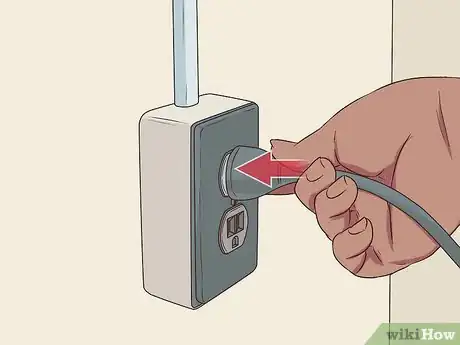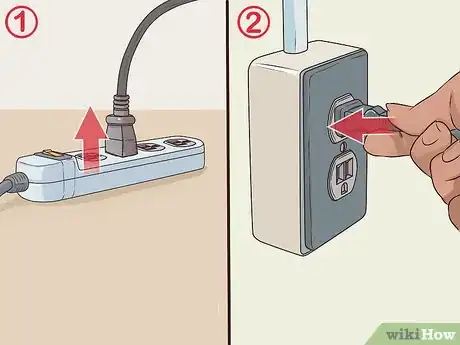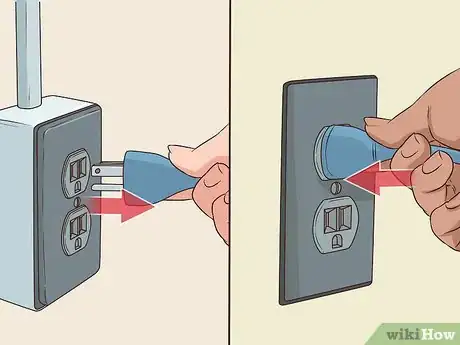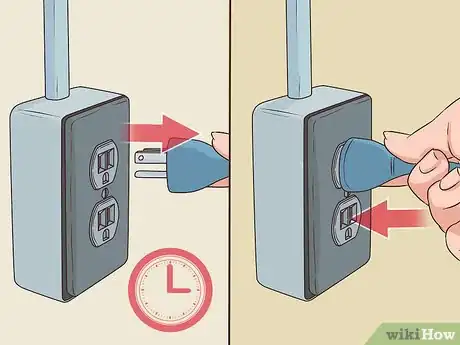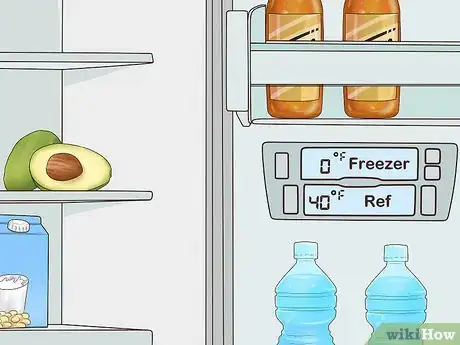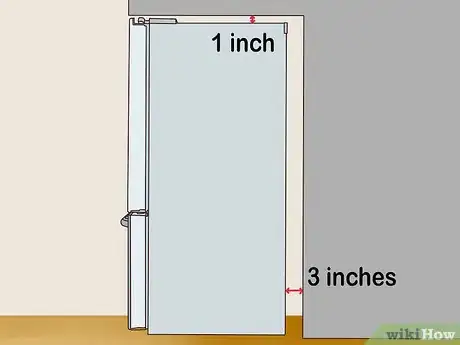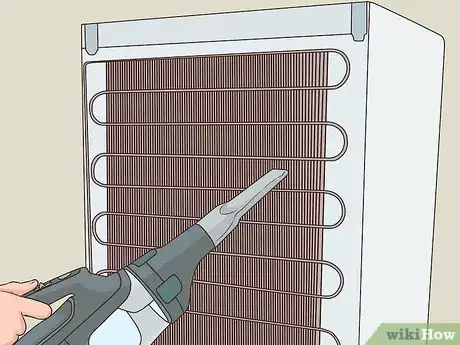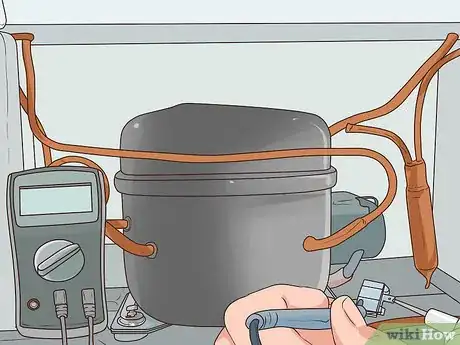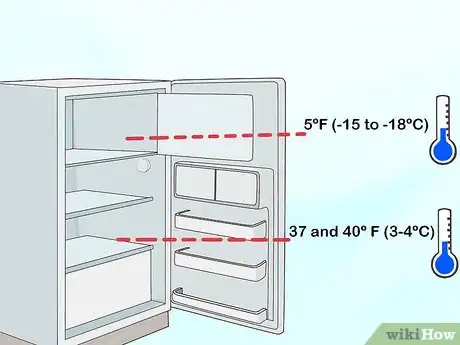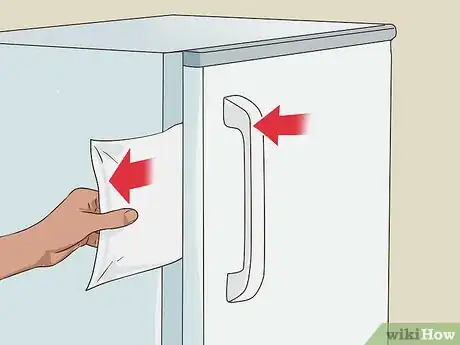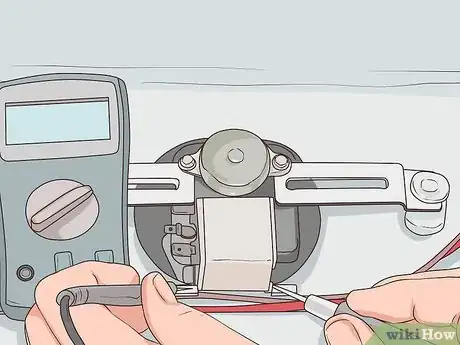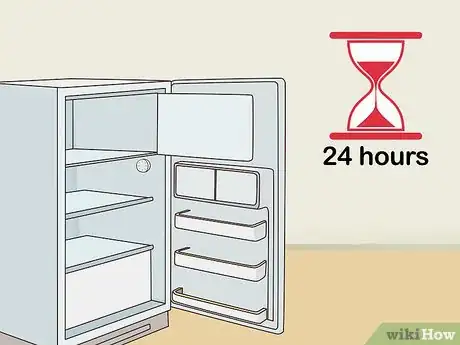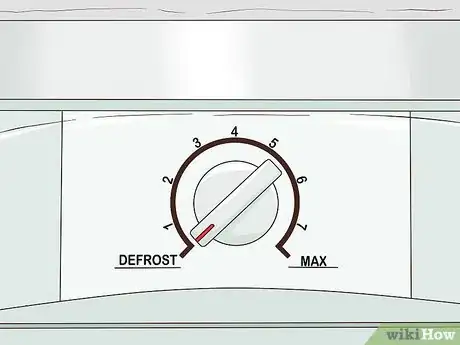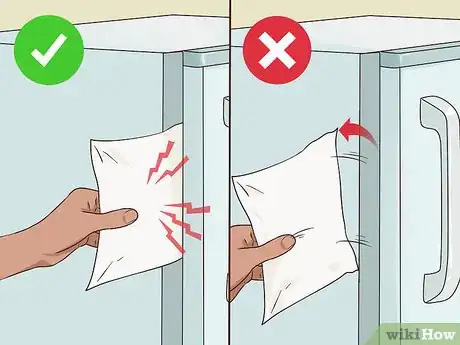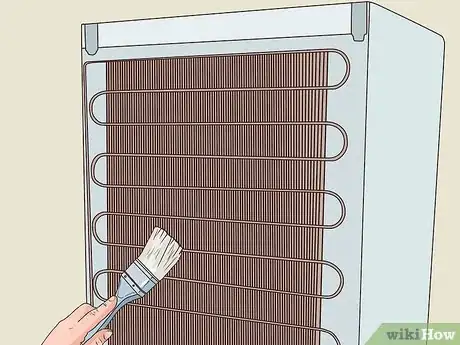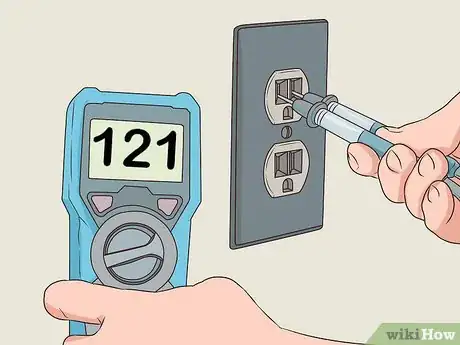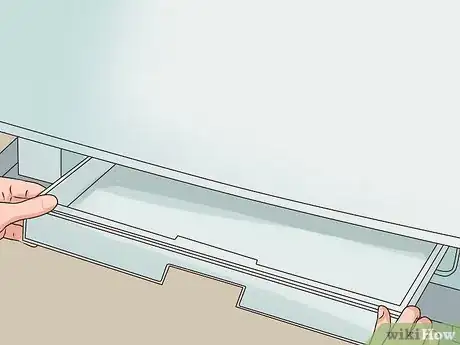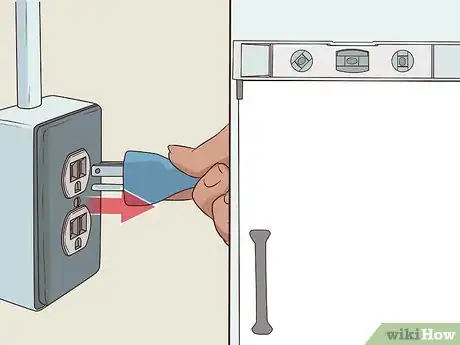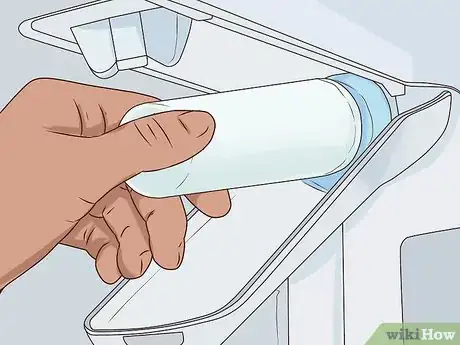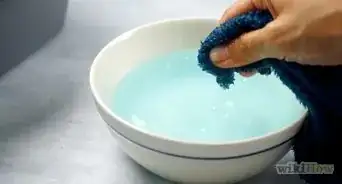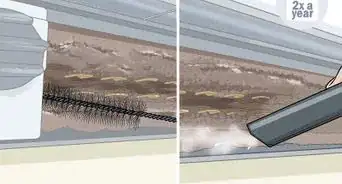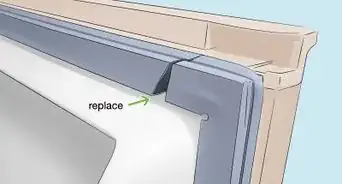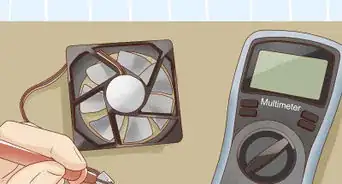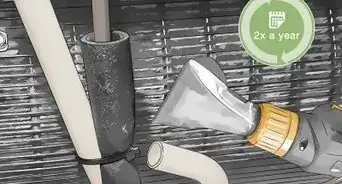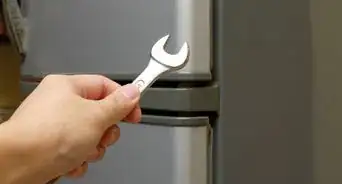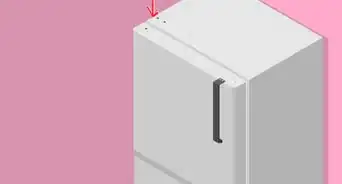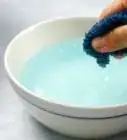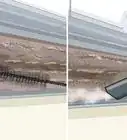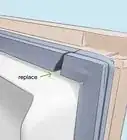This article was co-authored by Aaron Beth. Aaron Beth is the founder of Aaron’s Refrigeration Company in New York City and a factory certified installer (FCI) for Sub-Zero products. He specializes in the service and maintenance of built-in refrigerators, wine coolers and ice machines. With over 54 years of experience, Aaron is the recipient of numerous Super-Service awards from Angie’s Lists and 2019 Best-of-the City.
wikiHow marks an article as reader-approved once it receives enough positive feedback. This article has 11 testimonials from our readers, earning it our reader-approved status.
This article has been viewed 1,296,078 times.
Sometimes you notice there's something wrong with your appliance right away. Maybe the light in your refrigerator won't turn on or your food isn't staying cold enough. You might not know if it’s necessary to call a professional or if it’s something you can easily fix yourself. Diagnosing the problem yourself can be the difference between a quick fix and an expensive, unnecessary repair.
Quick Troubleshooting
| Problem | Solution |
|---|---|
| Refrigerator Won't Turn On |
Check the outlet and breaker |
| Refrigerator is Not Cooling |
Check the temperature gauge |
| Refrigerator is Not Getting Cold Enough | |
| Refrigerator is Constantly Running | |
| Refrigerator is Leaking |
Steps
Diagnosing a Dead Refrigerator
-
1Check that the power cord is plugged in all the way. Pull out the refrigerator if needed and press the plug firmly into the outlet. Check your appliance's electrical cord for damage. Any exposed wire, kinks or cuts in the cord might make the appliance malfunction. If this is the case, do not use the cord and contact a repairman.
-
2Remove an extension cord if you were using one between the refrigerator's main cord and the outlet. The extension cord may be damaged or faulty. Plug the refrigerator directly into the outlet. If this solves the problem, replace the faulty extension cord.[1]Advertisement
-
3Try another appliance in close proximity to the refrigerator. Plug the other appliance into the same outlet that your refrigerator was plugged into. If that appliance also does not work, check your fuse or circuit breaker box. You might have a blown fuse or tripped breaker.
-
4Try plugging the refrigerator into a different outlet. If this solves the problem, then the problem is with the outlet. Check the current and voltage of the outlet with a multimeter and voltage tester. If you do not know how to work these tools, contact a professional repair technician or electrician.
-
5Try leaving it unplugged for a while, then plugging it back in. This may reset the circuit board (like rebooting a computer or a cell phone). By leaving it unplugged, you allow capacitors to lose any charge they may be holding.
Diagnosing if Only the Light Works
-
1Check your temperature gauge inside the appliance. If the dial was bumped, it could have made it too warm for the refrigerator to turn on. It's important to check both the refrigerator and the freezer temperature settings, because the refrigerator gets its cold from the freezer. A problem with the freezer setting will affect the refrigerator as well.
- It should be set between 37 and 40º F (3-4ºC) for the refrigerator and between 0-5ºF (-15 to -18ºC) for the freezer.
-
2Make sure there's proper airflow around the appliance. Check the space between the walls and the appliance. There should be a 3-inch (76.2 mm) gap around the sides of the appliance and at least a 1-inch (25.4 mm) gap at the top. This provides airflow needed for the machine to function.[2]
-
3Clean the condenser coils with a vacuum or brush. This part helps dissipate heat that could make the appliance act funny. This cleaning should be done with the appliance turned off. You should clean rear-mounted coils once a year, and floor coils twice a year.[3]
-
4Test for overheating and continuity. Unplug the refrigerator for 2 hours and then plug it back in. If it starts running "normally" again, the compressor is overheating and it should be checked by a repair technician. Use a multimeter to test each component for continuity. These include the temperature control, the evaporator fan, the defrost timer, the overload protector and the compressor motor.
- You may have to consult your owner's manual for the locations of the components. If a part does not have continuity, it is faulty and will need to be replaced.
Investigating a Refrigerator That Isn't Cold Enough
-
1Check your temperature gauge inside the appliance. The dial could have been bumped, raising the refrigerator's temperature. It's important to check both the refrigerator and the freezer temperature settings, because the refrigerator gets its cold from the freezer. A problem with the freezer setting will affect the refrigerator as well.
- It should be set between 37 and 40º F (3-4ºC) for the refrigerator and between 0-5ºF (-15 to -18ºC) for the freezer.
-
2Inspect the vents. Check the vents between the freezer and refrigerator and the drain tube for debris and ice. Remove debris if needed. This obstruction could be your problem.[4]
-
3Test your door seals. Place a piece of paper between the seals and the appliance. Close the door and pull out the paper. You should feel tension if the seals are functioning properly.
- Repeat the process all around the seals of the appliance. If there's no tension at any spot, the seals are starting to fail. You should also check for cracks and rigidity that could be causing a failing door seal.
-
4Test the refrigerator components. Use a multimeter to test the continuity of the appliances various components. These include the door switches, the defrost heater and timer, and the evaporator fan. If any of these parts fail, they could be your problem.
Diagnosing a Refrigerator That Keeps Running
-
1Wait a day to see if the problem solves itself. Several factors could cause your refrigerator to temporarily run continuously. If you live in a humid environment, just loaded the refrigerator, or recently adjusted its temperature, it might take a while for the refrigerator to cool completely. It could take 24 hours or possibly more for it to cool.
-
2Defrost the freezer in case there's too much ice built up and clean your condenser coils. If there is a build of debris on your condenser coils, they won't be able to efficiently dissipate heat, and the refrigerator will have to constantly cool. If the defroster is faulty, then the evaporator coils will frost over, and the refrigerator will work harder to keep cool.[5]
-
3Test the door seal. The door of your refrigerator has a seal that prevents cool air from leaking out. If the seal is faulty, your refrigerator will have to constantly cool itself. Use a piece of paper to check for breaks in the seal. Close the door on the piece of paper and pull it out. There should be resistance when pulling the paper out, and if there isn't, a faulty door seal may be your problem. Repeat the test along the whole seal.
-
4Clean the condenser coils with a vacuum or brush. This part helps dissipate heat, and if it's too dirty, the refrigerator will have to work harder to stay cool. This cleaning should be done with the appliance turned off. You should clean rear-mounted coils once a year, and floor coils twice a year.[6]
-
5Test the continuity of the refrigerator's various components. This will require using a multimeter on several of the refrigerator's components. These components include: the condenser fan, the overload protector, and the compressor relay and motor. A fault in any one of these components can cause the refrigerator to cycle improperly.
-
6Test the outlet voltage. Use a multimeter to test the outlet voltage of the outlet that the refrigerator is plugged into. Do this only with the proper tools and safety measures. The voltage should test between 108 and 121 volts.
Determining Why a Refrigerator Leaks
-
1Check the drain pan and tube. Water pooled outside the refrigerator might be caused by a dirty drain pan. Your drain pan should be cleaned about once a year. Water pooled inside the refrigerator might be caused by a clogged drain tube. Clean out a clogged drain tube by forcing a solution of water and baking soda or bleach through the tube with a basting syringe.
- The refrigerator should be turned off before attempting to clean the drain pan and tube.
-
2Level the refrigerator. If your refrigerator is not level, things might not seal correctly, and the defrost drain might leak. The refrigerator was designed to operate correctly when level. Unplug the refrigerator, then place a level on top of the refrigerator. Check the back and front of the appliance and adjust the feet until it is level throughout.[7]
-
3Check the water filter. If the water filter is not fitted properly, water may leak out. After unplugging your refrigerator, remove and reinstall the water filter. Also check for cracks in the water filter head and housing. If there are damages, your filter head or housing will need to be replaced.[8]
Expert Q&A
Did you know you can get expert answers for this article?
Unlock expert answers by supporting wikiHow
-
QuestionDo I need to defrost my fridge if I don't see ice anywhere?
 Aaron BethAaron Beth is the founder of Aaron’s Refrigeration Company in New York City and a factory certified installer (FCI) for Sub-Zero products. He specializes in the service and maintenance of built-in refrigerators, wine coolers and ice machines. With over 54 years of experience, Aaron is the recipient of numerous Super-Service awards from Angie’s Lists and 2019 Best-of-the City.
Aaron BethAaron Beth is the founder of Aaron’s Refrigeration Company in New York City and a factory certified installer (FCI) for Sub-Zero products. He specializes in the service and maintenance of built-in refrigerators, wine coolers and ice machines. With over 54 years of experience, Aaron is the recipient of numerous Super-Service awards from Angie’s Lists and 2019 Best-of-the City.
Appliance Technician
-
QuestionHow do I defrost my fridge?
 Aaron BethAaron Beth is the founder of Aaron’s Refrigeration Company in New York City and a factory certified installer (FCI) for Sub-Zero products. He specializes in the service and maintenance of built-in refrigerators, wine coolers and ice machines. With over 54 years of experience, Aaron is the recipient of numerous Super-Service awards from Angie’s Lists and 2019 Best-of-the City.
Aaron BethAaron Beth is the founder of Aaron’s Refrigeration Company in New York City and a factory certified installer (FCI) for Sub-Zero products. He specializes in the service and maintenance of built-in refrigerators, wine coolers and ice machines. With over 54 years of experience, Aaron is the recipient of numerous Super-Service awards from Angie’s Lists and 2019 Best-of-the City.
Appliance Technician
-
QuestionAt what point should I just replace my refrigerator?
 Aaron BethAaron Beth is the founder of Aaron’s Refrigeration Company in New York City and a factory certified installer (FCI) for Sub-Zero products. He specializes in the service and maintenance of built-in refrigerators, wine coolers and ice machines. With over 54 years of experience, Aaron is the recipient of numerous Super-Service awards from Angie’s Lists and 2019 Best-of-the City.
Aaron BethAaron Beth is the founder of Aaron’s Refrigeration Company in New York City and a factory certified installer (FCI) for Sub-Zero products. He specializes in the service and maintenance of built-in refrigerators, wine coolers and ice machines. With over 54 years of experience, Aaron is the recipient of numerous Super-Service awards from Angie’s Lists and 2019 Best-of-the City.
Appliance Technician
Warnings
- Never tip or rock a refrigerator to gain access to a part. The appliance can fall on top of you and cause serious injury.⧼thumbs_response⧽
References
- ↑ http://www.searshomeservices.com/refrigerator-troubleshooting
- ↑ http://www.searshomeservices.com/refrigerator-troubleshooting
- ↑ Aaron Beth. Appliance Technician. Expert Interview. 14 July 2020.
- ↑ http://www.searshomeservices.com/refrigerator-troubleshooting
- ↑ Aaron Beth. Appliance Technician. Expert Interview. 14 July 2020.
- ↑ Aaron Beth. Appliance Technician. Expert Interview. 14 July 2020.
- ↑ http://www.repairclinic.com/RepairHelp/How-To-Fix-A-Refrigerator/59---/Refrigerator-leaking-water
- ↑ http://www.repairclinic.com/RepairHelp/How-To-Fix-A-Refrigerator/59---/Refrigerator-leaking-water
- Videos provided by Sears PartsDirect
About This Article
To diagnose refrigerator problems, start by making sure your refrigerator is plugged in and checking the circuit to your kitchen to make sure you haven't lost power. If everything looks good, check the temperature gauge to see if your fridge is overheating. If the temperature is high, try cleaning out the vents on the bottom and back of the refrigerator to ensure they are not preventing adequate air flow. If the temperature seems normal, check the door seals to see if they need to be replaced. To learn how to determine why your refrigerator is leaking, read on!
